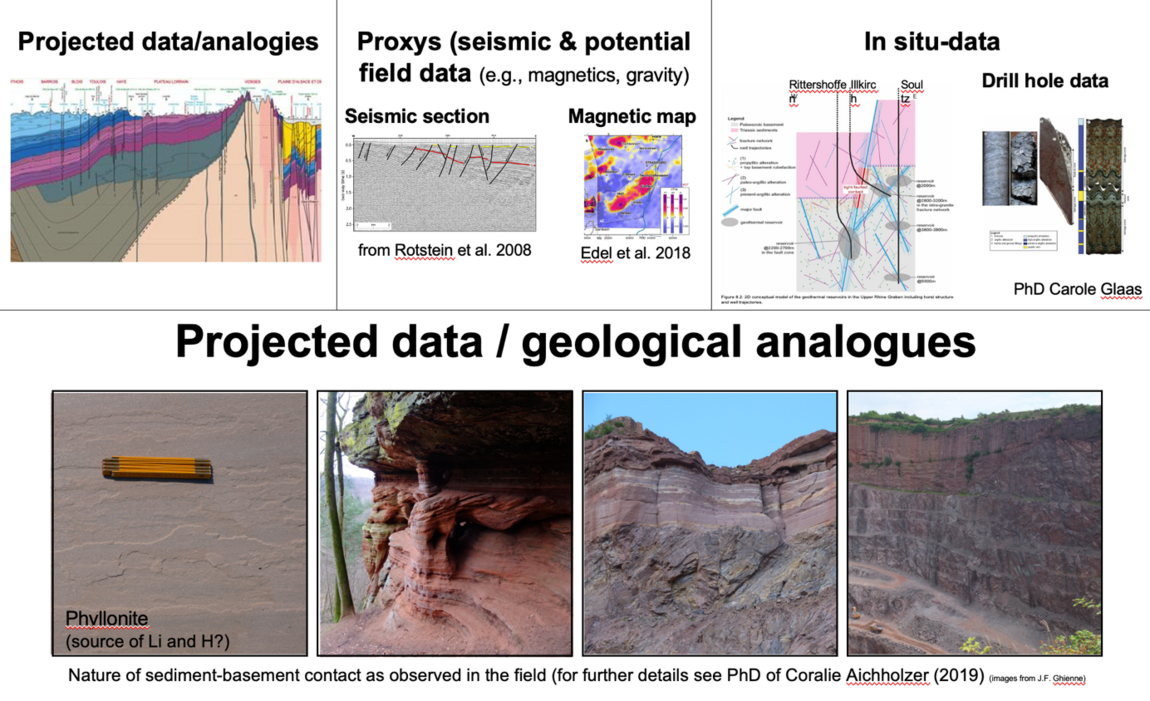The working group Geology within the ITI GeoT project aims to develop research in the domain of the energy transition. Four research themes are defined:
- Architectural analysis of the Buntsandstein Group, East France (PI G. Bozetti) characterization of reservoir properties in the Buntsandstein using a combined sedimentological/hydrological approach
- Control of the lower crust on heat-flow (PIs B. Petri and F. Chopin) modelling of the contribution of the lower crust in the basal heat flow using a petrological approach
- Mantle rocks as source for decarbonated energy, critical metals, and natural CO2 storage (PI M. Ulrich) development of a play-element approach for the use of mantle rocks in the energy transition based on a combined petrological/geochemical/tectonic approach
- Intermediate Geo-reservoirs from the Upper Rhine Graben (PI M. Schuster) a multi-disciplinary and multi-sources characterization of the so-called “Grande Oolithe” formation (pre-rift, Jurassic, Dogger)



